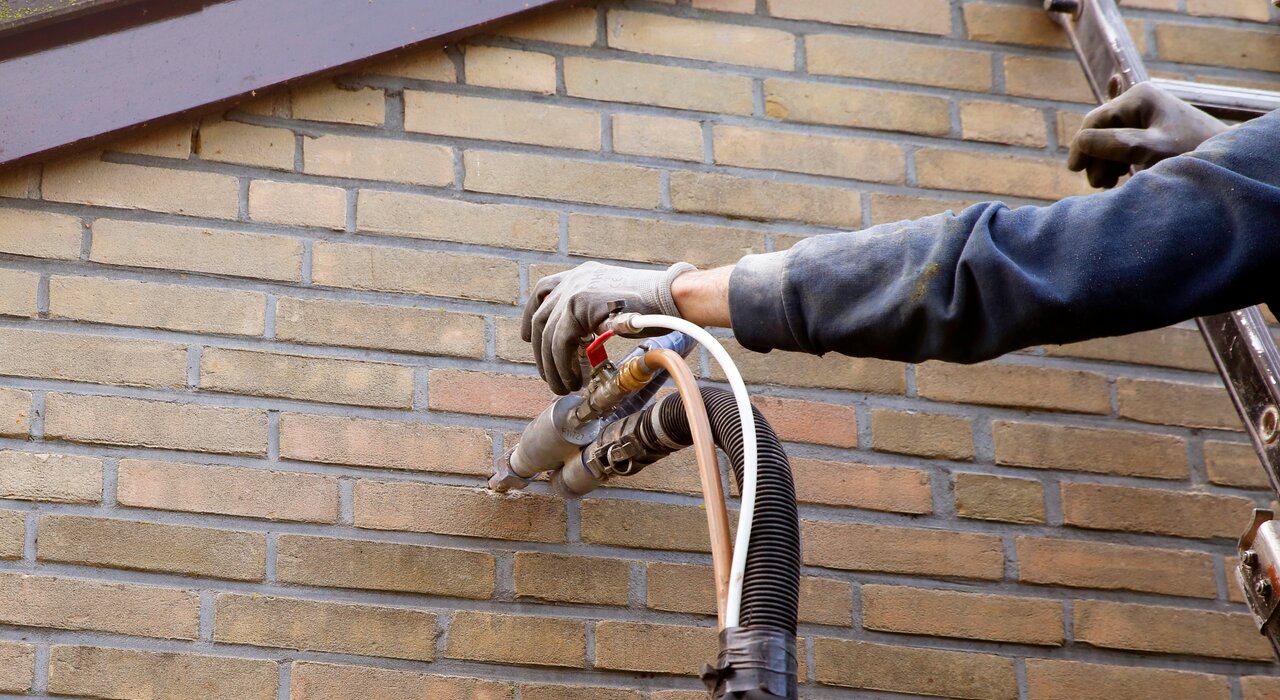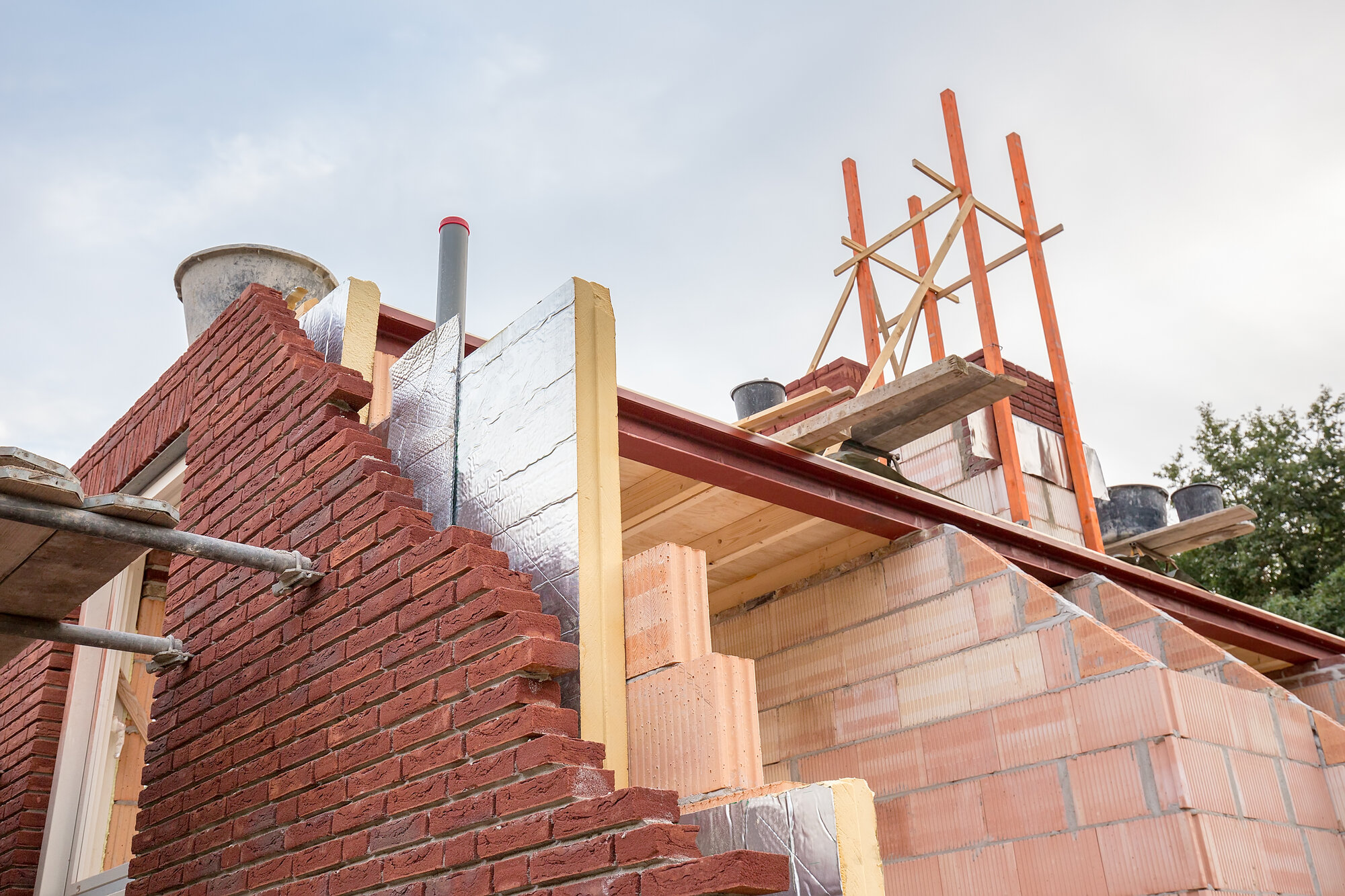
Making the right choice between cavity wall insulation (CWI) and external wall insulation (EWI) can feel like navigating a labyrinth. The ideal choice is nuanced and can be influenced by several considerations, including your property's structure, geographical location, local climate, financial restrictions, and specific energy efficiency objectives. Each method comes with its unique bouquet of benefits and potential challenges.
To slightly spoil our opinion...NO! CWI is certainly not better than EWI, so let's find out why.
Unravelling the layers of CWI
Most properties built after 1920 will tend to have cavity walls, composed of an inner and out 'leaf'. You may also see cavity walls referred to as hollow walls. They are precisely that; the cavity between the leaves is only filled by reinforcing wall ties. The ties bridge across the leaves and secure them together. Therein lies the structural rigidity of cavity walls. The cavity can also range between 4-10cm and requires weep holes.
Cavity wall insulation is an energy-efficiency measure that involves filling the aforementioned cavities. Professional installers should always carry out the installation of cavity wall insulation. They will use specialist equipment to inject the insulation into the cavity wall. This equipment generally comprises a hose or tube which is inserted into the wall cavity through drilled holes. The insulation material is then blown into the cavity under pressure until it's filled.
The number and pattern of the holes drilled can depend on the type of building and the type of insulation material. However, they're usually around 1m apart. Once the process is complete, the installer will fill the holes to match the existing exterior as closely as possible.
Cavity wall insulation materials commonly used include:
- Mineral Wool - A fibrous material made from rock or glass wool. It's non-combustible and water-repellent.
- Polystyrene Beads - Small, light beads combined with a binding agent to stick them together.
- Polyurethane Foam - A type of foam that expands once it's inside the cavity, providing a high level of insulation.
The benefits & drawbacks of CWI
As with all forms of building and insulating material, CWI has benefits and drawbacks. Assessing them in relation to EWI is crucial to determine which the better option is. The relative impact of each drawback is also crucial to consider. Some drawbacks will inevitably have more long-term detrimental effects.
Benefits:
- Less intrusive - The installation of CWI is less disruptive than EWI as it's done from the outside, with minimal impact on the internal living space.
- Cost-effective - It's typically cheaper to install than EWI, making it an attractive option for many homeowners, especially if budget is a concern. The cost of cavity wall insulation can vary widely depending on the size and type of the property, the insulation material used, and the region. In the United Kingdom, for instance, the average cost for a semi-detached house was typically between £400 and £600.
- Quick installation - The process is quicker than EWI, often completed within a day for an average-sized house.
- No aesthetic changes to the façade - CWI does not alter the appearance of the property, which can be a significant advantage in certain circumstances, such as in conservation areas or for listed buildings.
Drawbacks:
- Not suitable for all properties - CWI is only suitable for homes with cavity walls. Older homes with solid walls can't take advantage of this method.
- Potential for damp issues - If the cavity is not fully filled or if the insulation material gets wet, it can lead to cold spots, mould, and damp issues. Damp is a particularly pervasive problem for CWI.
- May require maintenance - In some cases, CWI can deteriorate over time and may need to be replaced or topped up.
Damp problems with CWI
If the insulation material is not installed correctly, it can allow moisture to bridge the cavity. This could result in damp patches appearing on the internal walls.
Not all properties are suitable for CWI. For instance, if a property is exposed to driving rain and the outer wall is not sufficiently waterproof, rainwater can penetrate the outer wall, soak the insulation, and transfer moisture to the inner wall, causing dampness.
Defects such as cracks in the external wall, faulty weep holes, or damaged brickwork can allow water to infiltrate the insulation and cause damp issues. Similarly, if the roof, windows, or doors are not properly sealed, rainwater can seep into the wall cavities.
In older houses, a DPC might be absent or become ineffective over time. If a damp-proof course isn't present or working effectively, groundwater can rise up the walls (rising damp) and, if CWI is present, the insulation can get wet and transmit the dampness to the inner wall.
Certain types of insulation material are more susceptible to retaining moisture. For example, mineral wool is more likely to hold water compared to materials like expanded polystyrene beads.
Why is EWI better?
At EWI Store, we firmly believe that EWI is the superior option. The issues with dampness that CWI leads to are a financial burden that few can cover. However, this is not the only reason why EWI is better.
- Universal application - EWI can be applied to all types of properties, whether they have cavity walls, solid walls, or even if they are of non-traditional construction. This is not the case with CWI, which can only be installed in properties with cavity walls.
- Comprehensive coverage - EWI covers the entire external façade of the building, effectively wrapping it in a 'thermal blanket'. This not only improves the insulation but also helps to eliminate thermal bridging, a common issue where heat escapes through the parts of the wall where insulation is less effective.
- Protects building structure - By placing insulation on the outside, EWI can protect the building's fabric from weather damage and dampness. This can be particularly beneficial for older buildings.
- External aesthetics improvement - While this might not directly pertain to energy efficiency, it's worth noting that EWI can significantly enhance a property's exterior appearance. A wide range of finishes and colours are available, allowing you to customize the look of your property.
- Internal space preservation - As EWI is installed on the outside of the property, it does not reduce the internal floor area, which can be particularly advantageous in smaller properties.
- Improved sound insulation - EWI can also enhance a property's acoustic insulation, reducing the amount of external noise that penetrates the walls.
- Longevity - EWI systems are typically very durable and come with long guarantees. This can provide homeowners with peace of mind and potentially reduce maintenance costs in the long term.
Which method of insulation is better? Let us know in the comments!


